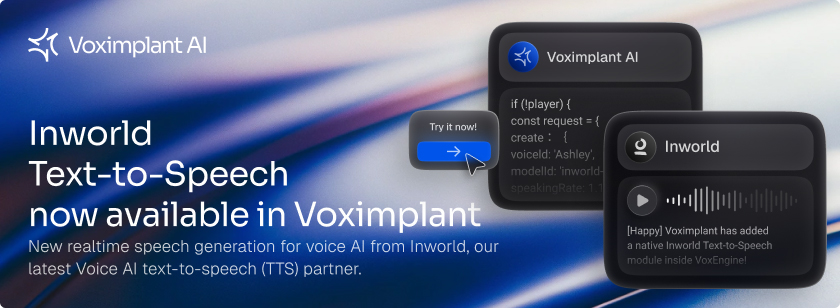Customers are always glad to provide you with their feedback if you: a) ask for it the right way; b) actually use what they say to improve the quality of your service and/or product. So, in this article, we'll review seven effective ways to collect and use customer reviews and general feedback.
Nowadays, many companies strive to be more customer-centric, which is why collecting feedback has become a high-priority task. Even negative reviews are extremely valuable, because they are the main driving force behind improvement and optimization processes.
Unfortunately, in many cases, if customers have had a bad experience, they’ll simply make the decision never to use your service or product ever again — without taking time to provide any thoughts or express their dissatisfaction in the form of a review. This way, it’s easy to lose a customer forever, without ever knowing what went wrong and caused problems. That's a pretty high price for not getting negative feedback, wouldn't you agree?
High-quality solutions for collecting customer feedback are in great demand today, because creating strong, long-lasting brand loyalty is impossible without them. Clients love it when you show that you care. By collecting their reviews in a non-intrusive and respectful way, you can express your appreciation and be able to constantly fine-tune your service.
There are multiple ways to collect customer feedback. First and foremost, it’s necessary to find the most customer-friendly ones that also fit your business case. Let’s take a look at some of the best methods.
How to collect customer feedback?
-
Simple surveys
Properly designed and executed surveys are a great way of collecting feedback. A non-intrusive, well-written survey works really well and lets you know if customers are satisfied with the quality of the service/product provided.
The best way to collect feedback is to use the customer's preferred communication channels. These can be various messengers, polls by phone, SMS or email. Quick polls tend to have higher completion rates. According to SurveyMonkey, if a survey has ten questions or less, the completion rate is typically around 89%, while long lists of questions (40 or more) usually have it around 79%.
Also, don't forget the advantage of telephone surveys — customers often find voicing their opinion much faster and more convenient than writing or choosing answer options (and having to read the questions). It is also convenient to use voice robots for such polls. They will be able to call all customers automatically and ask the necessary questions within a short period of time. Voice bots make the process of collecting feedback as efficient as it can get. They can be integrated with the company's CRM system, make records, synthesize and recognize natural speech.
-
Public polls
By public polling we mean that customers can answer the proposed questions, and the results will be available to any user who visits the website/application. These polls are easy to complete as they offer multiple choice questions for all questions. There is no typing, only clicks, and this makes it easy for customers to leave feedback.
Furthermore, such surveys often provide the opportunity to remain anonymous and not to provide your personal data. As a result, customers are usually more willing to participate in public service, because they are curious to see what other people think about a product/service.
-
Feedback buttons
This is another simple way to quickly gather information. Such clickable feedback buttons usually pop up on a customer’s screen after a service has been received. These buttons may look like emoji, stars, or just a scale that clients can use to indicate their level of satisfaction (NPS).
 Since such a survey is completed in just one click, a large number of people usually participate in it. Naturally, this approach is very convenient for the client, since it is possible to evaluate the service without explaining the reasons or going into detail. However, it’s not always the best option for the business, since it is difficult to understand what exactly caused dissatisfaction. In most cases, such surveys indicate the need for additional research.
Since such a survey is completed in just one click, a large number of people usually participate in it. Naturally, this approach is very convenient for the client, since it is possible to evaluate the service without explaining the reasons or going into detail. However, it’s not always the best option for the business, since it is difficult to understand what exactly caused dissatisfaction. In most cases, such surveys indicate the need for additional research.
How to use customer feedback?
-
Customer-focused product development
After processing customer feedback, you will have all the necessary data you need to start improving your product. For example, if the majority of your respondents are not satisfied with application/site usability, or if there are features that don’t work correctly due to the lack of testing, then your next updates can solve these issues.
-
Fine-tuning your marketing campaigns
While negative feedback is important to work with, it’s also very important to pay attention to what your customers like. The information about your most successful and generally liked products can give you hints about what your marketing strategy should focus on. Positive customer feedback can highlight your company's advantages in the market and give you an opportunity to fine-tune your promo campaigns accordingly.
-
Posting public customer reviews
People trust people. Many potential customers check online reviews of products and services before purchasing them. That is why, if you create a whole section for reviews on your website or social media pages, your potential and existing customers will not have to look for more information on the internet.
The main advantage of this approach is that it is controllable. So, for example, having received negative feedback, you can contact the client, find out the reasons for the dissatisfaction and solve the problem. Their bad review won’t ever go public. After the problem is solved, their feedback may even change to positive, and you’ll get the opportunity to publish it on your website.
-
Running loyalty programs
Many customers will be glad to know that their voices are being heard and used for improving products and business strategies. But why not go one step further and offer discounts or bonus points to those who take the time to leave a review? This will help build a loyal community of customers and users ready to provide you with all the necessary data.
Conclusion
Collecting customer reviews, both negative and positive, is crucial for keeping your clients satisfied and maintaining effective marketing and development strategies. All reviews are valuable and can play an important role in the further development of your products or brand. To grow faster and stay ahead of the competition, you need to listen to the most important thing you have - your customers.
Today we have reviewed some of the best ways of gathering feedback. If you have already decided that you need a solution that will help you get more reviews and enhance brand loyalty, we are ready to support you and suggest the most effective tools for running polls and surveys in a matter of hours using voice assistants.
Don’t hesitate to contact us. If you have any questions, we are always here and ready to help:





